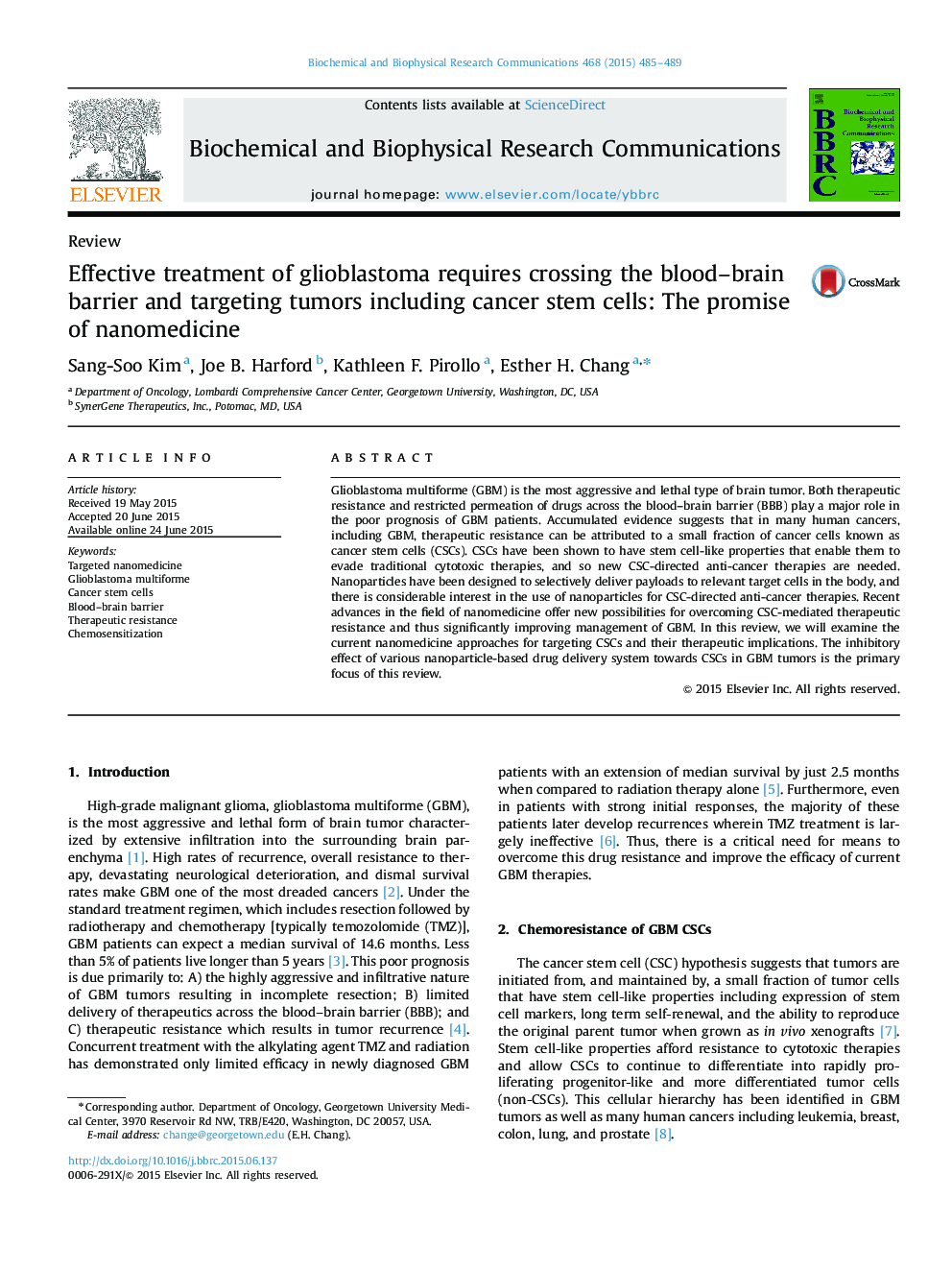| Article ID | Journal | Published Year | Pages | File Type |
|---|---|---|---|---|
| 1927930 | Biochemical and Biophysical Research Communications | 2015 | 5 Pages |
•GBM is the most aggressive and lethal type of brain tumor with a poor prognosis.•CSCs are the primary cause of current chemoresistance and recurrence of GBM.•Novel strategies are needed to overcome current therapeutic resistances in GBM.•New CSC-targeted therapies are being developed with nanomedicine.•Nanomedicine offers possibilities to overcome CSC-mediated therapeutic resistances.
Glioblastoma multiforme (GBM) is the most aggressive and lethal type of brain tumor. Both therapeutic resistance and restricted permeation of drugs across the blood–brain barrier (BBB) play a major role in the poor prognosis of GBM patients. Accumulated evidence suggests that in many human cancers, including GBM, therapeutic resistance can be attributed to a small fraction of cancer cells known as cancer stem cells (CSCs). CSCs have been shown to have stem cell-like properties that enable them to evade traditional cytotoxic therapies, and so new CSC-directed anti-cancer therapies are needed. Nanoparticles have been designed to selectively deliver payloads to relevant target cells in the body, and there is considerable interest in the use of nanoparticles for CSC-directed anti-cancer therapies. Recent advances in the field of nanomedicine offer new possibilities for overcoming CSC-mediated therapeutic resistance and thus significantly improving management of GBM. In this review, we will examine the current nanomedicine approaches for targeting CSCs and their therapeutic implications. The inhibitory effect of various nanoparticle-based drug delivery system towards CSCs in GBM tumors is the primary focus of this review.
